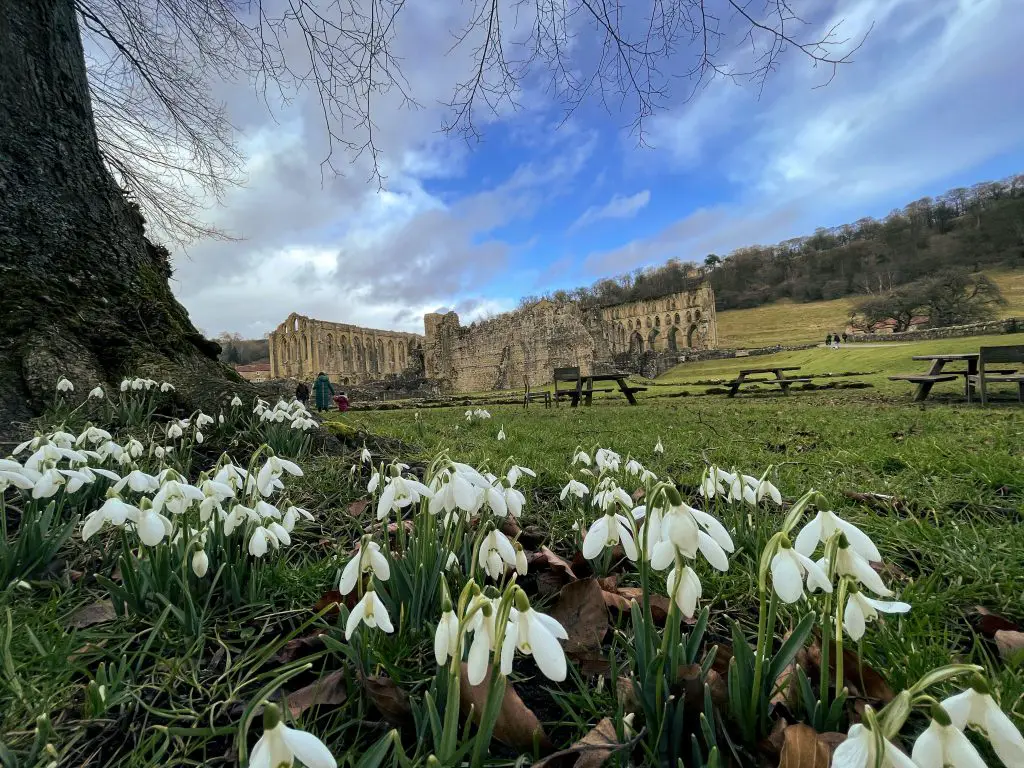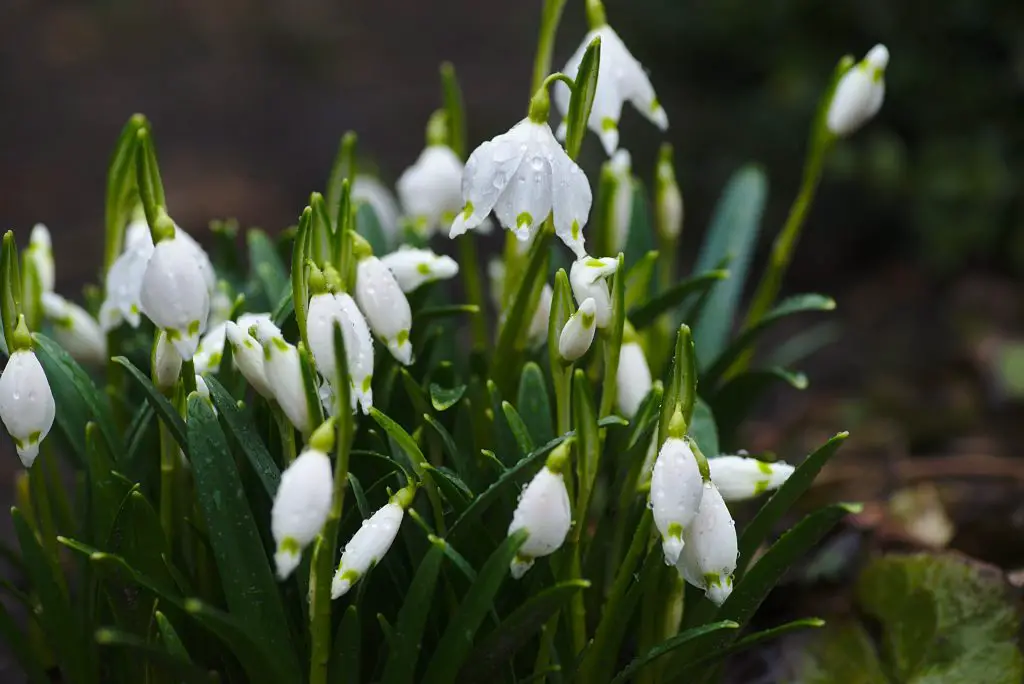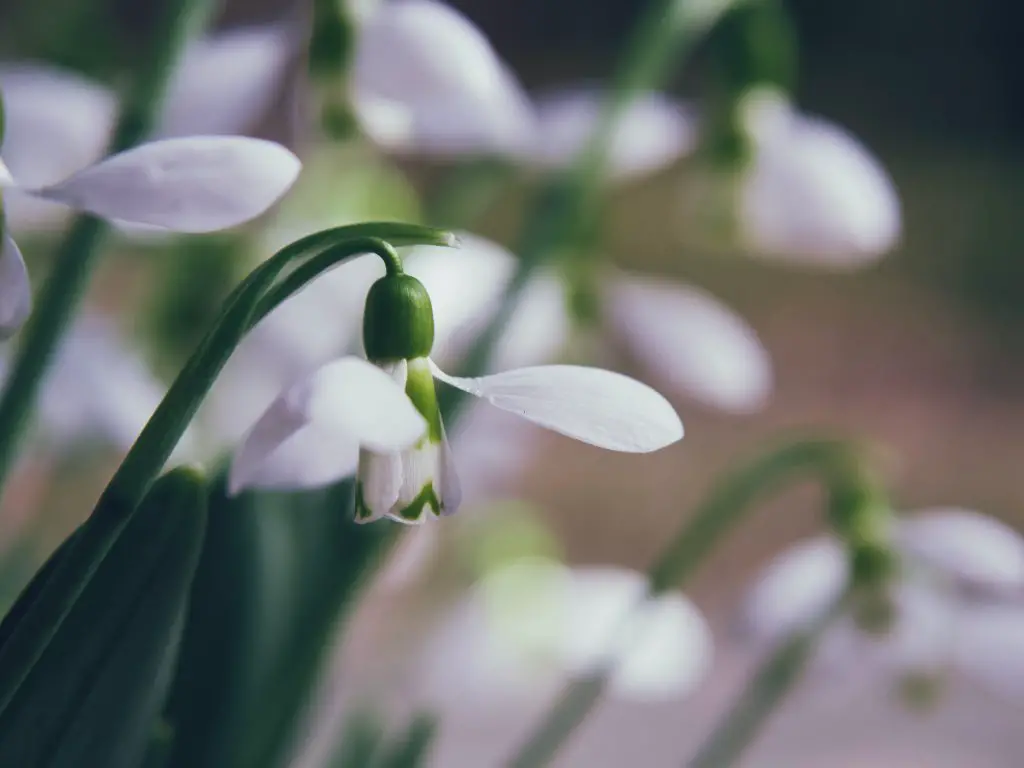Snowdrops are one of the most popular spring flowering bulbs as they produce a fantastic display in late winter when there isn’t much else flowering around the garden. They produce small white flowers only a few inches above the ground that can literally carpet an area, however, if you are planning to grow snowdrops at your house you may be wondering if are they invasive.
Snowdrops are generally not considered to be invasive and they do spread in the garden but relatively slowly. A snowdrop bulb will produce an additional 1 to 3 bulbs every year or so in the area where you have plantings already. Generally, these new bulbs will cause overcrowding within existing clumps of snowdrops rather than spreading out and creating larger clumps.
As a result of this slow rate of spreading and overcrowding most gardeners have to intervene with the snowdrops to ensure that they keep flowering by thinning out the clumps. As a result of this, they tend to dig the clumps up at the end of the flowering season and divide them with the spade and then replant them in a new location.

How Do Snowdrops Reproduce?
Snowdrops really only have one effective mechanism of reproduction which is the creation of new bulbs within the ground. So even though they have seeds that theoretically can create new bulbs they tend not to be the major mechanism for snowdrop reproduction.
Additionally, as the plants are relatively low to the ground any seed that is produced will not travel more than a few inches which means that they don’t really have the capacity to spread out in the garden like some other plants would.
As mentioned above the best way to increase your stock of snowdrops is to dig them up in summer when the foliage is beginning to dieback and then cut them in half with a spade to create two or even three clumps from an existing lot of snowdrops and then position them around the garden.
As the bulbs reproduce relatively quickly you will find that the number of snowdrops that you could potentially have in a garden can increase dramatically over a couple of years if you consistently divide the clumps every year.

Do Snowdrops Need To Be Deadheaded?
Snowdrops do not need to be deadheaded once the flower has finished. The reason for this is that snowdrops will only produce a single flower and deadheading will not encourage additional flowers to be produced by the bulb so there is little benefit.
The only thing that does help a little bit is increasing the amount of energy that is put back into the bulbs for the following year. If the plant is producing seed it will divert some of its energy into producing that seed rather than restocking the bulbs for the following year. However, I have personally not noticed a significant difference in the quality of flowers produce when the plants are deadheaded. Snowdrops are extremely low-maintenance flowers that essentially can be left on their own without having to do anything at all except perhaps divide the clumps every now and again.
Where Is The Best Place To Grow Snowdrops?
Snowdrops are a woodland plant that grows best at the base of deciduous trees. However, as they are a relatively early flowering plant they do require sunny conditions to flower, so ideally they should be planted in locations that are sunny during their flowering period.
However, to flower at their best they need to be grown in a climate that has relatively cool winters. they perform best in zones 3 to 9. This is because they need a period of cold in the winter to trigger the plants to flower in a similar way to other bulbs like tulips.
In terms of soil conditions, it is recommended that snowdrops be planted in a moist, free-draining soil that has plenty of nutrients. Boggy locations should be avoid as they can cause problems for snowdrops because too much moisture can lead to rotting of the plants.

What Month Do Snowdrops Bloom?
Snowdrops bloom in the months of March and April in the northern hemisphere and are among the earliest flowering bulbs. Snowdrops produce a single flower per leaf cluster and open just after sunset to pollinate their flowers.
The flowers typically only last for a few weeks before falling off of their stems. If you want to enjoy your snowdrop flowers all year long, it is best to divide your bulbs or plant them in a pot so they will not spread too quickly through your yard. This can be done by dividing the bulbs into several smaller clusters or by planting them in pots with ample drainage.
What To Do With Snowdrops After Flowering?
After flowering, Snowdrops should be left to their own devices and not touched until the foliage is beginning to die back. The reason for this is that snowdrops like all bulbs need their foliage to continue to photosynthesize after flowering is completed because the energy created is directed back down into the bulbs for next year’s flowers.
If you do not allow this to happen you can end up having either lower quality flowers produced or no flowers at all depending upon the conditions in which the bulbs are grown.
Conclusion
Snowdrops are miniature plants that can be found in the northern hemisphere. They are typically white and appear in early winter and are generally not considered to be invasive though they can spread gradually over time. They produce new bulbs consistently that can be divided making the plant easy to propagate.
Relevant Articles
Can Snowdrops Be Purple or Blue? Or Is There A Similar Looking Flower?
Do Snowdrops Flower The First Year?
What Is The Difference Between Snowdrops And Lily Of The Valley?
What Is The Difference Between Daffodils And Buttercups? Are They The Same Thing?
